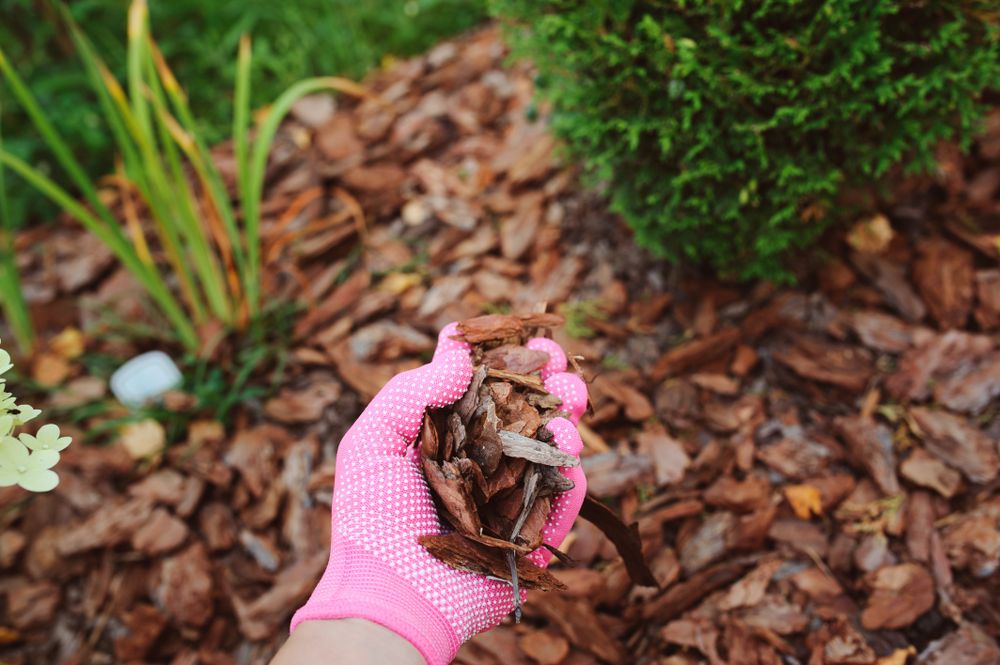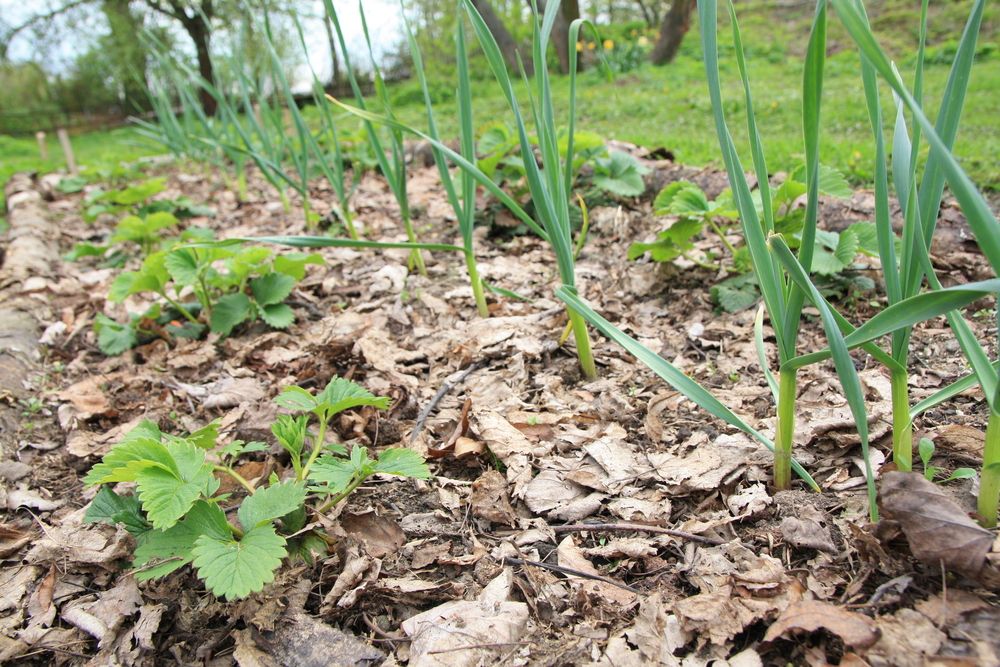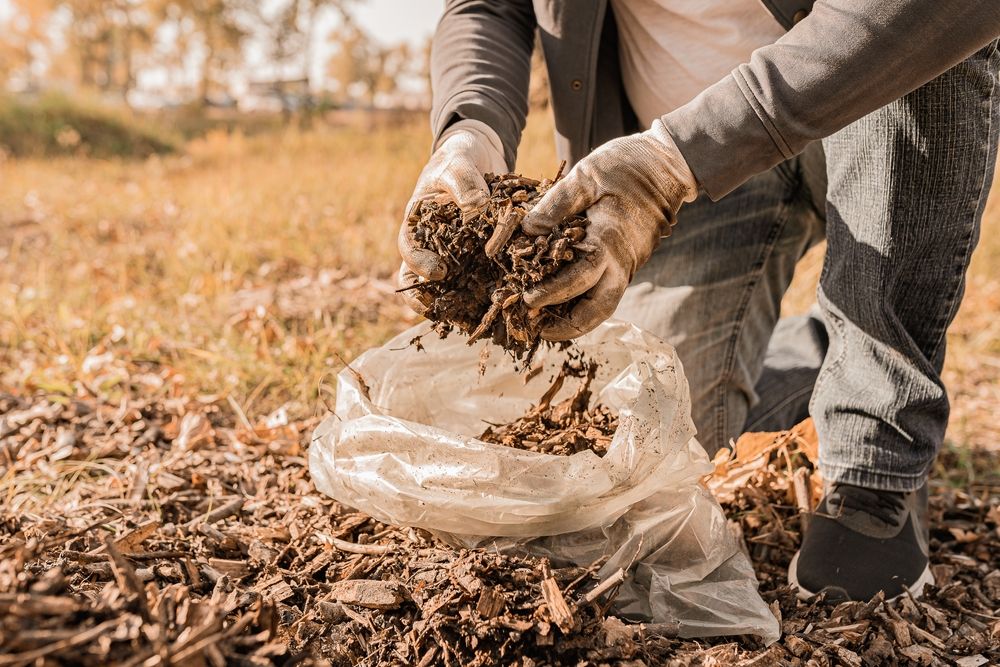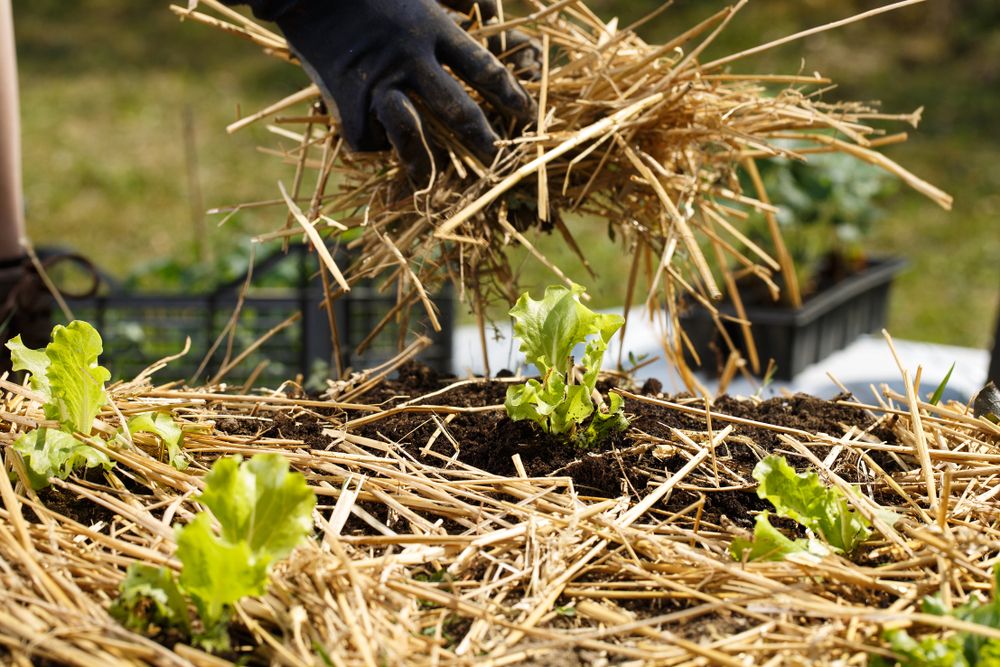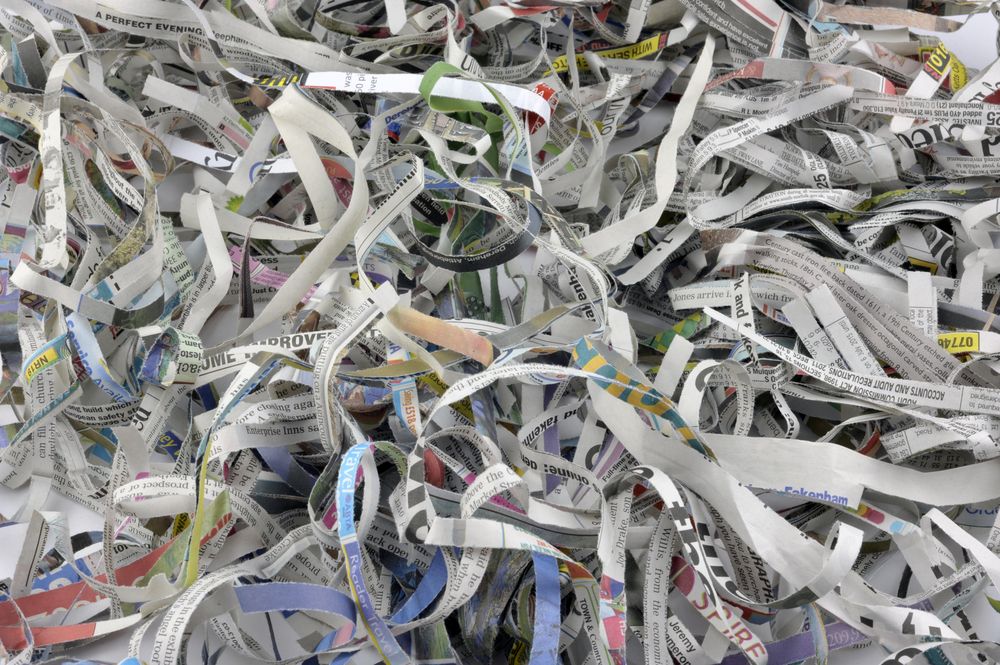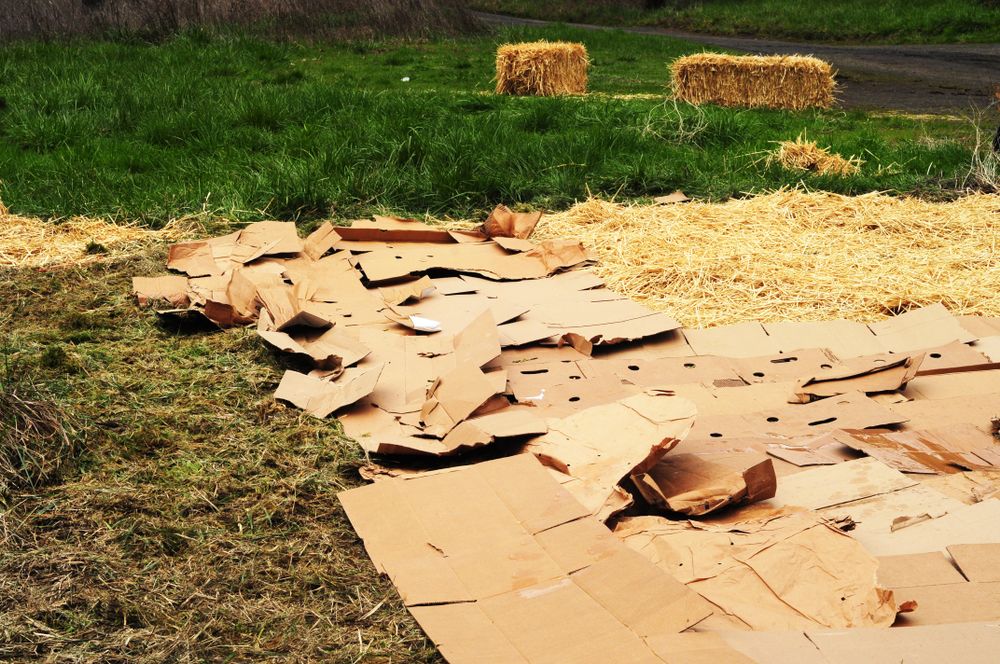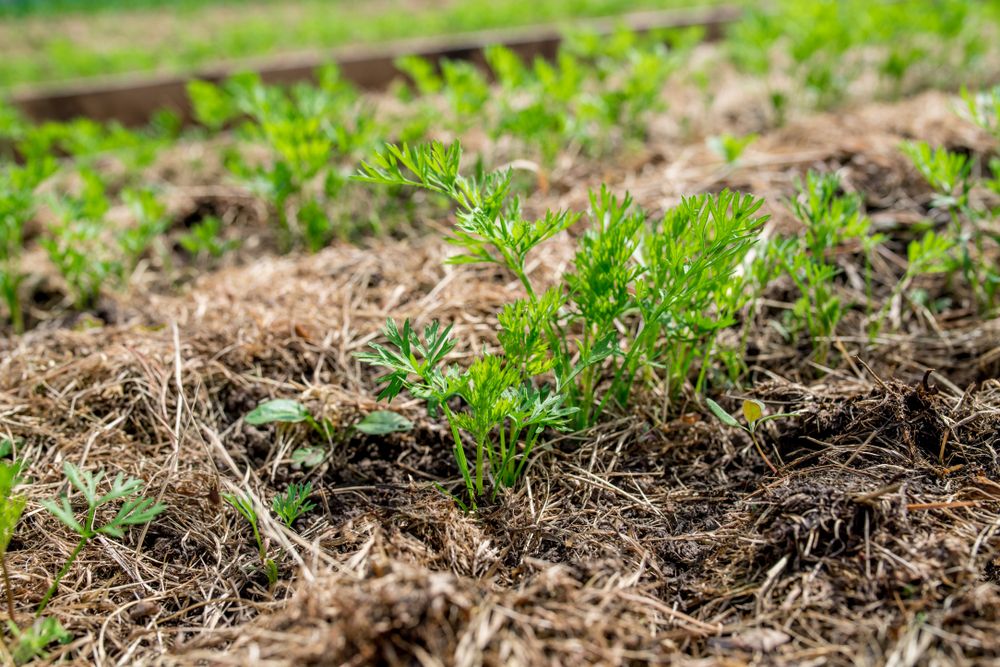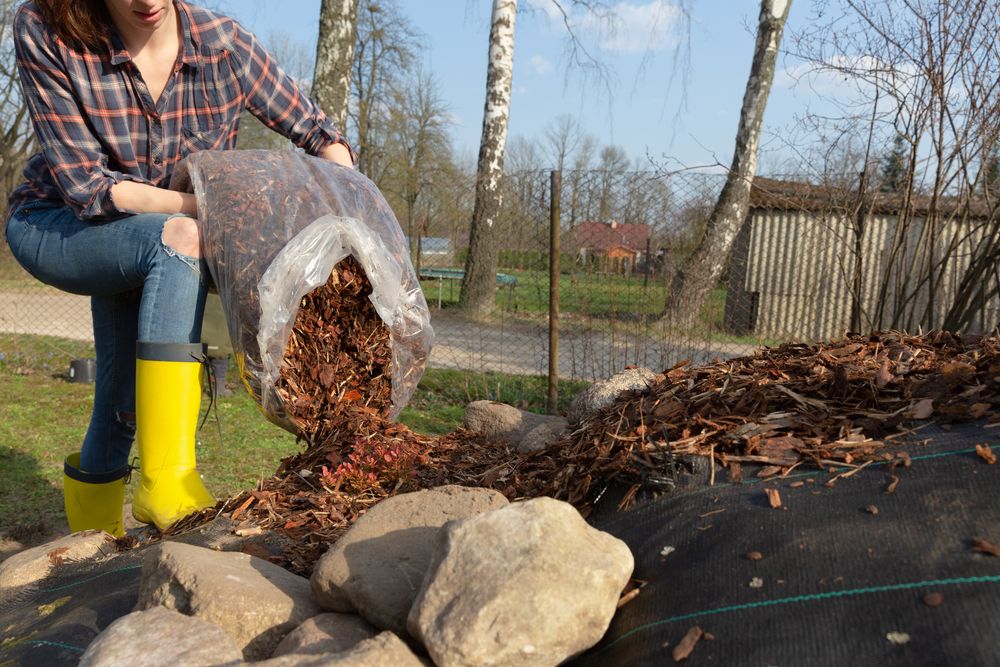Many gardeners focus on how to prepare their gardens and perennial plants for winter with the arrival of cooler autumn temperatures. It includes cleaning their backyard spaces, removing and storing bulbs, and applying winter mulch. If you have never heard about this last practice, people do that to protect their plants from freezes, thaws, and winds. It helps the ground remain frozen, shielding it from the sun's rays so the plants can stay dormant.
With so many types of winter mulch available that can be made for free or low-cost at home, you may wonder which one is the most suitable for your garden. That's why in this article, you will find the best ideas, including how to use them to take your gardening efforts to the next level.
Wood Chips
Image credits: Maria Evseyeva via Shutterstock
If you are looking for aesthetically pleasing mulch for garden spaces, wood chips are a great solution. There are many options available at your local garden center or home improvement store, but these are often overly processed.
If you prefer a more natural approach, you can create your homemade wood-based mulch. It is easy to do and offers an opportunity to use up some of the yard waste you may have from maintaining your property.
Despite the name, there is more to a wood chip mulch or wood-based mulch than just the woodchips themselves. For best results, create a mixture of leaves, bark chips or shredded bark, and wood chips from different species of trees. By including various species, you can make the nutritional benefits of your mulch last longer, as each variety will decompose at its rate. It will help you to grow stronger, healthier plants in the resulting soil.
Leaf Mulch
Image credits: Hirundo via Shutterstock
With the autumn weather upon us, there is one simple mulch option that is freely available. Fallen leaves and pine needles are a great choice for gardeners to cover perennials for the winter months, insulating and protecting them until the spring weather returns. Not only is leaf mulch a cheap alternative that helps to clean up your yard, but leaf compost is also a source of nitrogen, improving the quality of your soil.
For best results when using leaf mulch, don’t just rake up the leaves from your yard and drop them in your garden in a pile. Instead, use shredded leaves to help speed up the rate of decomposition. Rake your leaves up into a pile, and run over it with a lawnmower a few times, shredding the leaves into small pieces. Take your shredded leaves and place them in and around your perennials, creating a 3-to-6-inch protective layer. Any additional leaves can be tossed in your compost pit to make high-quality leaf compost for next year’s gardening season.
Compost as Winter Mulch
Image credits: larisa Stefanjuk via Shutterstock
Those who have already committed to composting in their own home will be happy to hear that they can use it for more than just improving soil quality during the planting process in the spring. By adding your compost as a mulch, you can insulate your plants from the winter temperatures, reduce the evaporation from the soil, maintain a healthy level of moisture, and continue to improve upon the available nutrients as your compost continues to break down.
To create your compost, you will need a mixing container. It should be large enough to contain your compost pile and be able to rotate and mix it. There are commercially constructed compost bins available, or you can create a square with freestanding walls in your backyard close to your garden space.
Hay or Straw Mulch
Image credits: zlikovec via Shutterstock
If you live on a farm or have connections with a local farmer, hay and straw are great choices for cheap winter mulch. These organic materials compost very slowly, meaning you can apply them to cover crops effectively at the start of the season, protecting your plants and their root systems until the following season. A blanket of mulch made from hay or straw will work to insulate the soil and maintain warmer soil temperatures even when faced with snow cover, making it an excellent option for winter mulching.
Unfortunately, this mulch has two drawbacks to consider. First, since they're very lightweight, they can easily be blown away across your yard by the wind. It could create a mess in your yard or even annoy the neighbors if it isn’t addressed quickly. Additionally, straw and hay have been known to attract rodents as it offers a warm, comfortable place for them to hide. If you live in an area where rodents may be a problem, this solution is not recommended.
Shredded Paper Mulch
Image credits: Graham Corney via Shutterstock
While the paper isn’t going to add nutrients to the soil in the way that many of the other options on this list will, it’s a good alternative for insulating and protecting the area. It is also a perfect opportunity to recycle paper that otherwise would positively go to the landfill.
To create this mulch option, start by shredding the paper. You can do this by using an electronic shredder or simply cutting the paper into thin strips by hand. To add nutritional value to your mulch, mix some organic materials such as leaves or compost.
Additionally, you can wet the paper down slightly with compost tea. It will allow it to stick together, preventing it from blowing away on a windy day. Avoid using too much and making your paper soggy as it will cause your mulch to collapse upon itself, becoming matted and eliminating the important air pockets that work to insulate your plants.
Cardboard Sheet Mulching
Image credits: Sam Barrett via Shutterstock
This mulch is less of a recipe and more of a process. However, cardboard sheet mulching can be a valuable tool in your gardening efforts. Also referred to as lasagna composting, this refers to the use of cardboard and organic materials in layers to improve the soil structure, create new perennial borders and eliminate grass and weeds for new garden beds.
Grass Clippings
Image credits: Kuznetsov Dmitriy via Shutterstock
This type of mulch is easily accessible and beneficial to your garden, but only if used in moderation or combined with other mulching options. However, it’s arguably the easiest option on this list as it simply uses the grass clippings generated each time you mow your lawn. Gather up your grass clippings and spread them over your garden soil, creating a thin layer of mulch.
Avoiding adding a large pile of these clippings from your lawnmower to your garden as you could harm your gardening efforts. Grass clippings are nitrogen-rich, meaning they will increase the nitrogen in your soil, fertilizing the plants you are growing there. Vegetables grow well in nitrogen-rich, slightly acidic soil. If you add too many grass clippings, it can interfere with the ability of moisture and oxygen at the surface to reach the soil below. Stick to a thin layer for the best overall results.
Evergreen Branches
Image credits: Arturs Budkevics via Shutterstock
For those looking to insulate their perennials with minimal work, evergreen branches can be used to mulch smaller and tender plants. This provides an insulating wrap for larger shrubs that need a little extra protection. You don’t need to cut up or chip the branches.
They are strong enough to hold up under the weight of the snow and large enough to stay in place in the wind and other elements. When spring rolls back around, all you have to do is remove your branches from the garden, and you’re ready to start gardening.
Choose the Best Mulch for Your Gardening Efforts
With so many great options available, there is sure to be a good material for any garden, yard, or outdoor space. Start by considering the benefits that you hope to obtain from your mulch. Are you simply looking to provide some winter insulation, or are you interested in boosting the quality of your soil?
From there, consider which options suit your needs the most and how much work you are willing to put into your mulching efforts. When you’re done, you can start counting down to the beauty of spring and get back into your outdoor gardening once again.
Comment which winter mulch alternative you find the most useful, and as always, please share!


